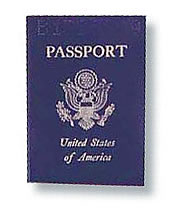 In an attempt to attract younger players, the New York Times reports the venerable slot machine is undergoing a generational shift.
In an attempt to attract younger players, the New York Times reports the venerable slot machine is undergoing a generational shift.“We’re talking about a different vernacular, a whole different machine,” Whipsaw’s president, Dan Harden, said. His ultimate challenge, Mr. Harden said, is to redesign the machines that power the gambling industry to appeal not just to the “Cadillac generation” but to the
“ BMW generation” as well.
What is very interesting is the admission by industry experts that perhaps their current business model of attracting to a younger demographic might not be best for their bottom line.
For example, “Younger players come to town to party,” said George Maloof Jr., president of the Palms Casino Resort, a popular Las Vegas hangout for people under 40. “They drink, they go to nightclubs, they go to the after-hours clubs, they check out the pool for the scene there. Gambling in general is not high on their agenda.”
The problem is however "gambling, particularly playing the slots, still pays the bills." What is even worse is the fact that the younger gambler trend toward the less profitable table games, not the higher profit slot machines.
We have previously written about the lack of middle of the road medium price casinos on the strip. All the newer high end casinos, just built, or are being built, are geared toward this unprofitable demographic. Casinos that attract the primary slot machine player that drives the casino profits are being ignored.
“With all the growth going on, every casino has to bring in new players or we’ll see a drop in everyone’s market share,” said Frank Legato, managing editor of Global Gaming Business, a trade journal. “It’s critical to keep bringing new players into casinos rather than recycle those who are already there.”
Most of the $1 billion-plus that the roughly one million slot machines in the United States take in on a typical day is paid to winners. But about 5 to 10 percent, depending on the casino and whether it is a penny, nickel, quarter or dollar machine, stays with the casino.
“The slot makers need to figure out how to develop these younger players,” Mr. Maloof said. “We need it for the bottom line.”
It seems that the push toward the "higher end night clubbing partying demographic" may prove to be just as unprofitable as the previous Las Vegas trend toward attracting the "family market."







